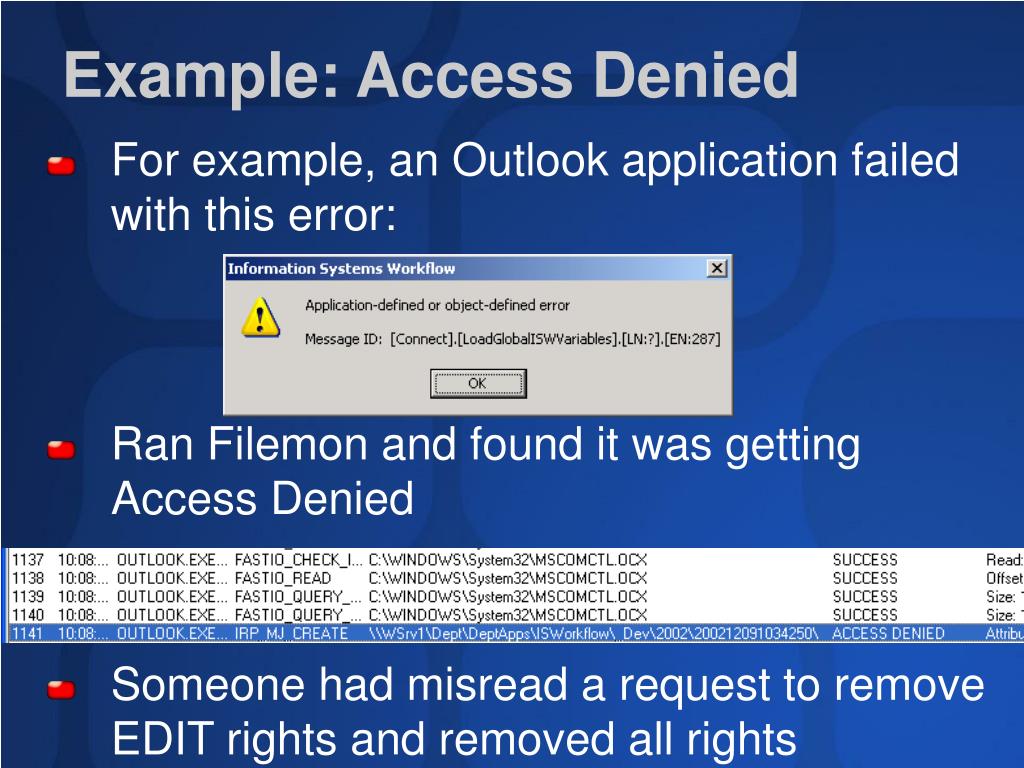

- SYSINTERNALS FILEMON 64 BIT
- SYSINTERNALS FILEMON 32 BIT
- SYSINTERNALS FILEMON FULL
- SYSINTERNALS FILEMON WINDOWS
SYSINTERNALS FILEMON WINDOWS
Windows NT/2000 note: because of the asynchronous nature of file I/O, its not possible to filter on the result field.įor example, if the include filter is "c:\temp", and the exclude filter is "c:\temp\subdir", all references to files and directories under c:\temp, except to those under c:\temp\subdir will be monitored. Use ' ' to separate multiple strings in a filter (e.g. Only matches shown in the include filter, but that are not excluded with the exclude filter, are displayed. The '*' wildcard matches arbitrary strings, and the filters are case-insensitive. Use the Filter dialog, which is accessed with a toolbar button or the Edit|Filter/Highlight menu selection, to select what data will be shown in the list view. If Filemon's internal buffers are overflowed during extremely heavy activity, this will be reflected with gaps in the sequence number.Įach time you exit FileMon it remembers the filters you've configured, position of the window and the widths of the output columns. To start it with capture disabled use the /o switch on the command-line.Īs events are printed to the output, they are tagged with a sequence number. When FileMon starts it automatically captures file system activity. To start FileMon without it prompting you specify the /q switch on the command line. If you've specified filters then FileMon will ask you to confirm filters used from the last session each time you start it. Menus, hot-keys, or toolbar buttons can be used to clear the window, select and deselect monitored volumes including network volumes (Windows NT/2K/XP), save the monitored data to a file, and to filter and search output. When FileMon is started for the first time it will monitor all local hard drives. You must have administrator privilege to run FileMon. If you have questions or problems please visit the Sysinternals Filemon Forum.
SYSINTERNALS FILEMON FULL
It has full search capability, and if you find that you're getting information overload, simply set up one or more filters.įileMon works on NT 4.0, Windows 2000, Windows XP, Windows XP and Windows Server 2003 64-bit Edition, Windows 2003 Server, Windows 95, Windows 98 and Windows ME. It begins monitoring when you start it, and its output window can be saved to a file for off-line viewing. FileMon is so easy to use that you'll be an expert within minutes. Filemon's timestamping feature will show you precisely when every open, read, write or delete, happens, and its status column tells you the outcome.

Its advanced capabilities make it a powerful tool for exploring the way Windows works, seeing how applications use the files and DLLs, or tracking down problems in system or application file configurations. Sysinternals Freeware - Mark Russinovich & Bryce Cogswell Ĭopyright © 1996-2006 Mark Russinovich and Bryce Cogswell įileMon monitors and displays file system activity on a system in real-time. I wasn't able to find something about this in the help file.Sysinternals Freeware - Filemon "./includes/main.css" It is a graphical representation of the overall process activity based on the number of events or the elapsed time. I must admit, I don't really understand the purpose of this feature. In the tools menu, there is new the new point " Activity Summary". I found a third new feature which the SearchWinIT article doesn't mention. I suppose, I won't need this feature either. So this feature only gives you some limited information about the process' activity during a certain time span. It only displays the activity span for each process (see screenshot) in the Process Activity Summary window (formerly called Process Summary). Unfortunately, Procmon 1.2 doesn't really allow you to "see how each process is running" (whatever that is supposed to mean). There is another new feature that sounds interesting in the SearchWinIT article:Īlso included in the latest version is a feature that lets users better see how each process is running during an activity trace by showing a graph for each one. Well, that's not really exciting either, is it?
SYSINTERNALS FILEMON 32 BIT
Process Monitor has the new switch "/run32" for this purpose which does nothing else than run the 32 bit version of the tool.
SYSINTERNALS FILEMON 64 BIT
You can now open log files on a 64 bit machine that were generated on a 32 bit system. Process Monitor 1.2 has some new features, though. It just means that Process Monitor's filters only affect the display of events, but not the event data itself. The real name of the feature is non-destructive filtering and it's not new because the predecessors of version 1.2 already supported it. So, it seems like my desktop is just screwed up and MS didn't add "destructive" filtering. I tried the tool on two other Vista machines, and it worked there without problems.


 0 kommentar(er)
0 kommentar(er)
